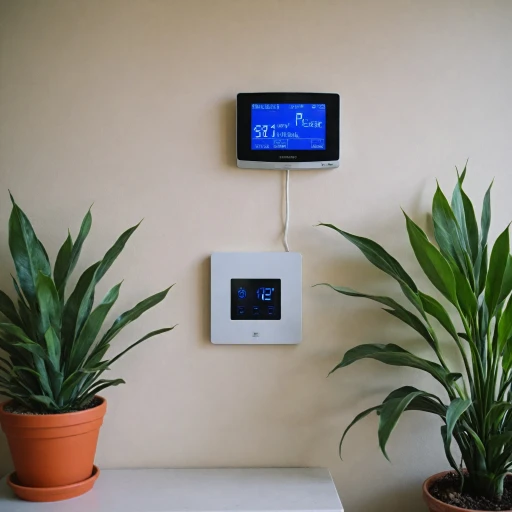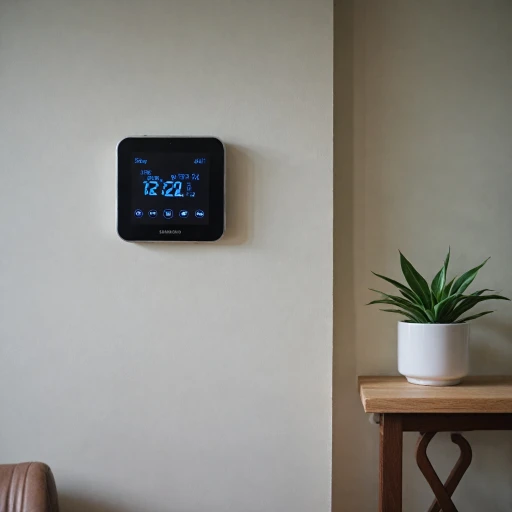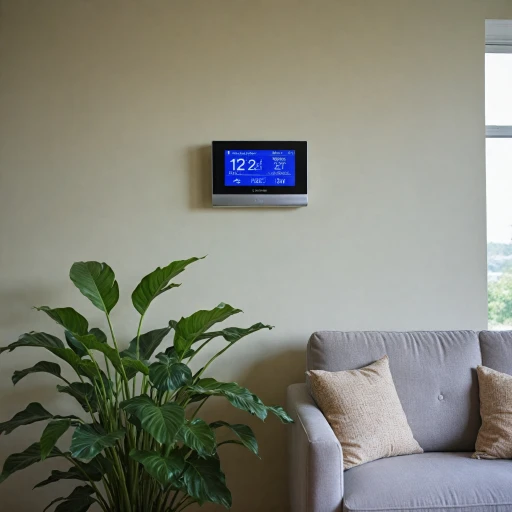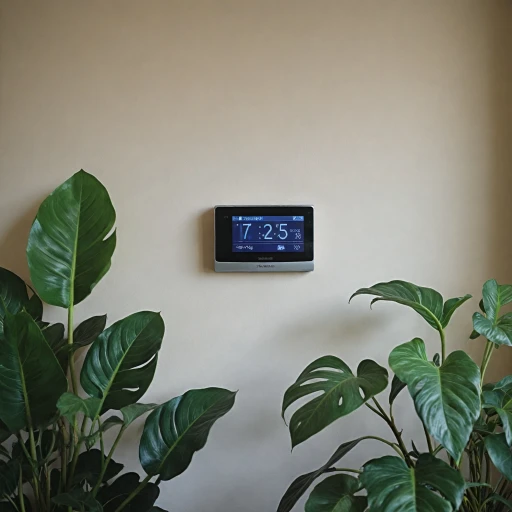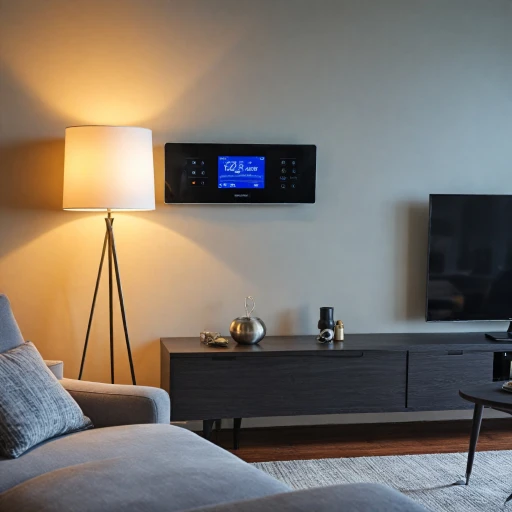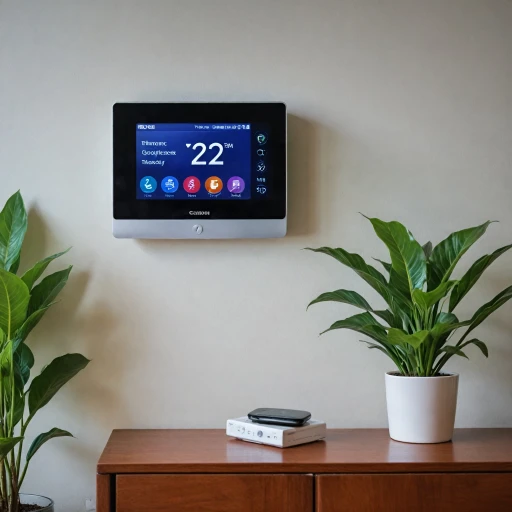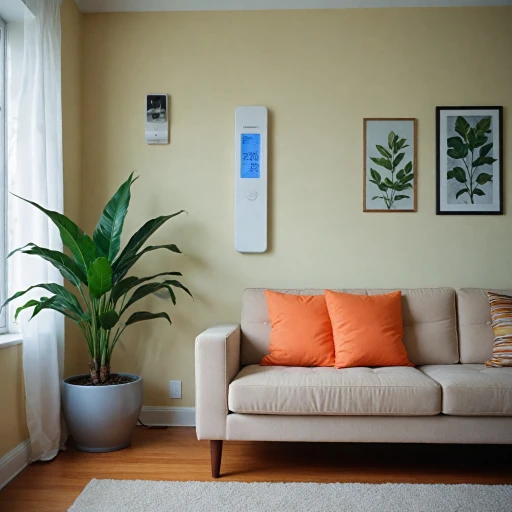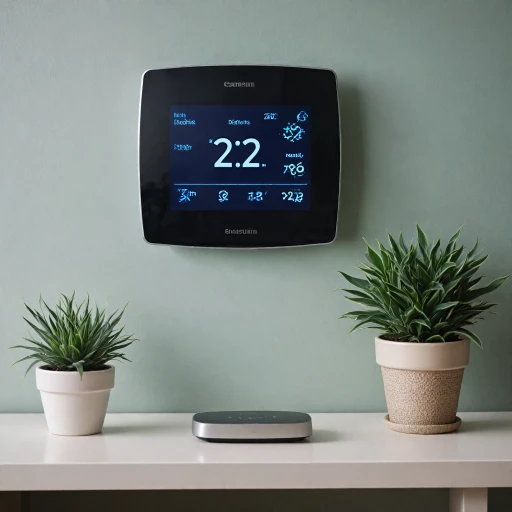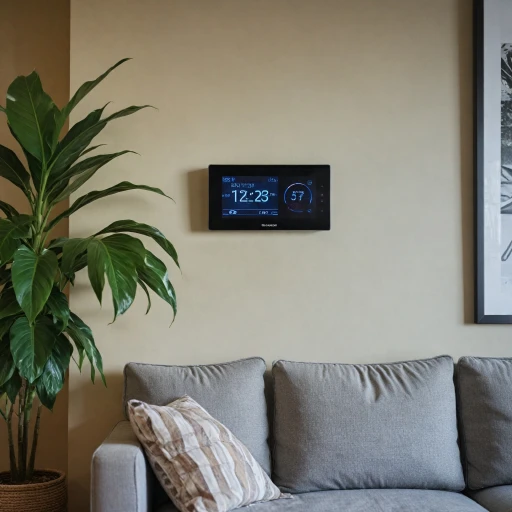
Understanding WiFi Thermostats and the Common Wire
Decoding WiFi Thermostats and the Essential Common Wire
WiFi thermostats have revolutionized the way we manage home heating and cooling systems. These smart devices, such as the Nest thermostat and Ecobee smart thermostat, offer programmable options that integrate seamlessly with Alexa and Google Assistant, allowing users to control their home environment remotely. However, the installation of these smart thermostats often requires a crucial component: the common wire, or C-wire.
The common wire is integral to providing continuous power to the thermostat. It ensures that the device remains operational even when the heating or cooling system is not actively running. Many traditional systems lack this wire, posing a challenge for those looking to upgrade to a smart thermostat. Without a common wire, the thermostat may not function properly, leading to issues with connectivity and response times.
Understanding the role of a wireless thermostat receiver can be vital for those considering a WiFi thermostat without a common wire. This component can serve as an alternative to the C-wire, ensuring that the thermostat receives the necessary power to operate efficiently. For more detailed insights, you can explore this resource.
While the absence of a common wire presents challenges, innovative solutions and products on the market today offer alternatives. As we delve into the subsequent sections, we will explore these challenges and the solutions available, helping you make an informed decision when selecting a WiFi thermostat for your home.
Challenges of Installing WiFi Thermostats Without a Common Wire
Installation Obstacles with No Common Wire
Installing a WiFi thermostat without a common wire presents unique challenges that many homeowners face. A common wire, or 'C-wire,' is essential for providing continuous power to smart thermostats. Without it, the thermostat might struggle to maintain a stable connection, affecting its performance and reliability.
Power Supply Issues
One of the primary challenges is ensuring that the thermostat receives adequate power. WiFi thermostats, such as the Nest thermostat or Ecobee smart thermostat, require a constant power supply to maintain connectivity and function effectively. Without a common wire, these devices may rely on battery power, which can be inconsistent and lead to frequent recharging or replacements.
Compatibility Concerns
Another hurdle is compatibility with existing heating and cooling systems. Many older systems lack a common wire, making it difficult to integrate modern smart thermostats like the Nest Learning thermostat or Google Nest. This can limit your options and may require additional components like a wire adapter or power connector to bridge the gap.
Installation Complexity
The absence of a common wire can complicate the installation process. Homeowners may need to seek professional help to ensure proper installation and avoid potential damage to their HVAC system. This can increase the overall price and complexity of the project.
Potential Workarounds
Despite these challenges, there are workarounds available. Some manufacturers offer power extender kits or suggest using a wire adapter to provide the necessary power. Additionally, certain models, like the Ecobee smart thermostat, come with built-in solutions to handle the absence of a common wire, making them a viable option for those without a C-wire.
Understanding these challenges is crucial for anyone considering a WiFi thermostat without a common wire. By acknowledging these obstacles, homeowners can better prepare for the installation process and make informed decisions about their smart home upgrades.
Innovative Solutions for No Common Wire Setups
Overcoming Wiring Limitations with Creative Solutions
For homeowners looking to upgrade to a smart thermostat but facing the absence of a common wire, several innovative solutions are available. These options cater to different needs and systems, ensuring that lack of a common wire isn't a roadblock to upgrading to a more energy-efficient home.
One of the most popular solutions is using a thermostat wire adapter, also known as a power extender kit. This device allows the thermostat to draw power from existing wires connected to the system, eliminating the need for a separate common wire. Brands like Nest and Ecobee offer their own versions: the Nest power connector and the Google Nest setup, which promise seamless integration with their learning thermostats.
Another option is opting for battery-operated or battery-backed alternatives. Products like the Nest thermostat have internal batteries that can keep the thermostat running. These can be an optimal choice for homes without a reliable common wire option. For more on this, you may want to look into the benefits of the T9 smart thermostat.
It's also worth considering thermostats that are specifically designed to learn your heating and cooling patterns, adjusting accordingly to optimize energy use. Some are programmable and can work with smart home devices like Alexa and Google Assistant. This adds a new layer of functionality, allowing voice-controlled adjustments.
Ultimately, the right choice depends on your current system and specific needs, but options abound for those willing to explore the innovative solutions available.
Benefits of WiFi Thermostats Without a Common Wire
The Value of Choosing WiFi Thermostats Without a Common Wire
When the idea of replacing your traditional thermostat with a WiFi-enabled smart option comes up, the common wire issue can seem daunting. Yet, it's worth considering the benefits that come with opting for a WiFi thermostat that doesn't require a common wire. Firstly, enjoying energy efficiency is a major advantage. Smart thermostats like the Nest Learning Thermostat and the Ecobee SmartThermostat, both with Alexa Google integration, optimize heating and cooling schedules based on your daily habits. This adaptability often translates to significant savings on energy bills over time, aligning with energy star standards. The convenience of programmable thermostat features is another key benefit. Many of these thermostats offer day programmable options, allowing customized temperature settings for each day of the week, ensuring your home is always at the desired comfort level. Products such as the Lite Smart Thermostat provide an intuitive interface that can be programmed and adjusted through a mobile app or by voice command using Amazon Alexa or Google Assistant. Moreover, the reduced need for invasive installation is a big plus. Without the need to run an additional wire, these systems are often easier and quicker to install, saving both time and potential additional costs. Using accessories like a wire adapter or power connector can help in systems where power requirements were a concern. Lastly, the flexibility of having multiple smart thermostats in your home without rewiring cannot be overstated. You can explore various options priced to fit different budgets, all optimized to balance comfort with cost-efficiency. Integrating WiFi thermostats without a common wire offers not just a smart home upgrade but an enhanced quality of life with cutting-edge response capabilities to your home environment needs. Navigating this choice involves considering several factors, such as compatibility with existing heating and cooling systems, along with the programmable features important for your lifestyle. Explore the available options to find the perfect WiFi thermostat solution for your unique requirements.Comparing Popular WiFi Thermostats Without a Common Wire
Comparing Top WiFi Thermostats Without a Common Wire
When it comes to selecting a WiFi thermostat that operates without a common wire, several factors come into play, including compatibility, ease of installation, and smart features. Below, we delve into some popular options that have garnered attention for their innovative approaches to power and connectivity.
- Google Nest Thermostat: Known for its sleek design and smart features, the Google Nest Thermostat is a top choice. It offers seamless integration with Google Assistant and Alexa, making it easy to control via voice commands. The Nest Learning Thermostat version is particularly notable for its ability to adapt to your schedule, optimizing energy usage efficiently.
- Ecobee SmartThermostat: This thermostat stands out with its built-in Alexa functionality, allowing for direct voice control without needing an additional device. The Ecobee SmartThermostat also includes a room sensor to manage hot and cold spots, enhancing overall comfort.
- Honeywell Home T9: A strong contender in the market, the Honeywell Home T9 offers compatibility with both Alexa and Google Assistant. Its standout feature is the ability to control multiple zones, making it ideal for larger homes with varied heating and cooling needs.
- Emerson Sensi Touch: This option is praised for its affordability and user-friendly interface. The Emerson Sensi Touch is compatible with most HVAC systems and offers a straightforward installation process, often requiring no additional power connector or wire adapter.
When choosing the right thermostat, consider the specific needs of your heating and cooling system, as well as the level of smart integration you desire. While the price may vary, investing in a programmable thermostat can lead to significant energy savings over time, making it a worthwhile addition to any home.
Tips for Choosing the Right WiFi Thermostat for Your Home
Key Factors to Consider When Selecting a WiFi Thermostat
Choosing the right WiFi thermostat for your home without needing a common wire requires careful consideration of several factors. It's essential to weigh your options based on compatibility, cost, features, and ease of installation.- Compatibility with Your HVAC System: Ensure that the smart thermostat you're considering is compatible with your existing heating and cooling system. Some systems may require additional equipment like a wire adapter or power connector to function correctly.
- Power Requirements: A common challenge is powering the thermostat without a common wire. Look for models that offer alternate power solutions, like the Nest Thermostat or Ecobee Smart thermostats, which can function with or without a C-wire.
- Smart Features: Evaluate the smart capabilities of the thermostat, such as compatibility with voice assistants like Alexa and Google Assistant. Additionally, consider if it offers programmable settings, learning functions, or energy-saving features like Energy Star certification.
- Ease of Installation: Some products offer simpler installation processes. Nest Learning thermostats, for example, are noted for their straightforward install and use tutorials.
- Budget: Prices can vary significantly, from basic models to advanced options offering intricate features. It's crucial to find a product that offers a balance between cost and functionality suited to your needs.
- Brand Reputation and Reviews: Consider thermostats from well-regarded brands such as Google Nest or Ecobee. Checking product reviews, including those on platforms like Amazon, can provide insights into user satisfaction and potential issues.

